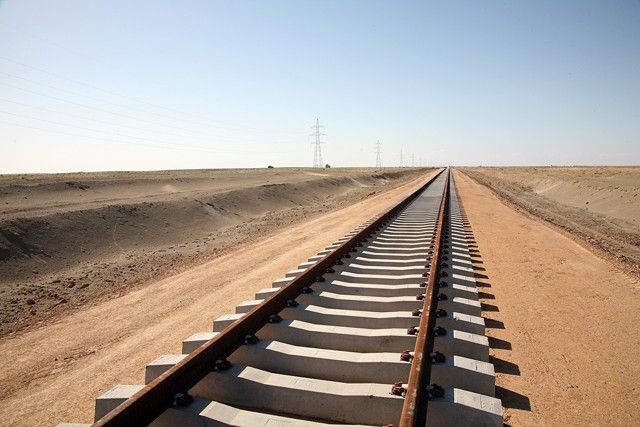BISHKEK (TCA) — Today, east-west rail links are considered at least as important as maritime power. The various branches included in China’s ambitious plan to install a hardware network, in which rail and road links are crucial, face various problems, though. The problems include the failure of different players in the complex game, in particular Kyrgyzstan, Tajikistan, Uzbekistan and Turkmenistan, to come to a joint agreement to eliminate border hubs for transit traffic – not to speak of battlefield Afghanistan. This, as well as other factors, makes land routes more complicated and thereby more expensive than wished for.
Rail adventure
Early this year, the first container train from China’s eastern Zhejiang province through Kazakhstan and Turkmenistan to Tehran completed its 10,400 kilometre trip, thanks to the recent opening of two new links in the Kazakh grid, linking the eastern and western parts of the country across the central plateau and the Caspian port of Aktau across Turkmenistan to northwestern Iran. The journey took a fortnight, as compared with six weeks from Shanghai to Bandar Abbas by sea.
In August, another frivolous rail adventure came to a successful end, which was a cargo train’s journey from the eastern Chinese Nantong into war-torn Afghanistan. The detour was enormous: first to the remote hub of Urumchi, from there through the border hub of Khorgos to Almaty, from there along the line to Orenburg until the junction between Taraz and Turkestan on to Kazakhstan’s sole rail link to Tashkent and finally, taking a long detour to circumvent Tajikistan, through Samarkand, Karshi and Kumkurgen (on the railroad leading to Dushanbe) to turn right and crossing the border at Termez, reach the northern-Afghan town of Mazar-e-Sharif.
Avoiding transit tracks
It all shows how problematic the southern connection in China’s grand New Silk Route design remains. There is a tendency to treat destination countries one by one.
The demarcation line between the southern and central grids stretches straight across Kyrgyzstan, where the existing line from Balykchy on the west point of Lake Issyk-Kul leads to Bishkek, stopping at the industrial centres of Tokmok and Kant, and from the capital along the industry town of Kara-Balta into Kazakhstan where it joins the Almaty-Orenburg line. From here at a junction between Chu and Taraz, the southwestern towns of Osh and Jalal-Abad, as well as a number of mining towns in the area, link up to Uzbekistan’s grid in the Fergana Valley, which only recently got linked up directly with Tashkent without having to cross Tajik territory.
There is a rail link Osh – Jalal-Abad, but it crosses Uzbek territory where it is linked up to the Fergana grid. The most advanced plan is now to link either Osh or Jalal-Abad to the Chinese border post of Torugart and from there to the nearby Chinese (now dead-end) terminal of Kashgar, thereby circumventing Tajikistan. But the government in Bishkek not only fails to make up its mind on the choice between Osh and Jalal-Abad but also prefers to link up Balykchy with Torugart. The main aim: stay away from Uzbekistan and Tajikistan as far as possible.
No economic justification
In a recent article Russia’s semi-official news channel Sputnik quoted Ivan Zuenko, a research fellow at Far Eastern Federal University, as pointing out that the current share of westbound land transport from China is no more than 2 per cent. This has an economic justification since it costs about $6,000 to deliver a container from China to Europe by train, which is nearly five times more expensive than to transport the same container by sea. He gives the example that in the first half of 2015 the Department of Transportation of the city of Wuhan transferred almost $4.5 million to compensate a state-owned company using the train route Wuhan-Xinjiang-Europe for losses.
Political interest
The only explanation for China’s apparent readiness to take certain financial cost due to political risks for granted is that the latter represents a factor of interest on its own. So far all interested parties including China, Russia, India, Pakistan and Iran have shown reluctance to move into Afghanistan to put things in order there at least for the time being, and all of them hold the eventual necessity to do so at the back of their minds. Railways are still the best way to get troops and vehicles in: trains are a lot safer than planes, and a lot faster than roads. The last word about the “New Great Silk Route Belt” has therefore not been spoken – but the “southern belly” of it will not be wiped from the map overnight…
This is the third, and last, part of a series of articles focusing on railway projects connecting China, Central Asia, Russia, and Europe. The previous, second, article can be read here

